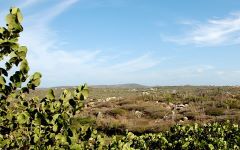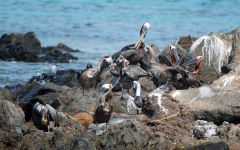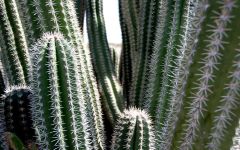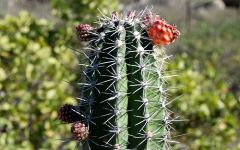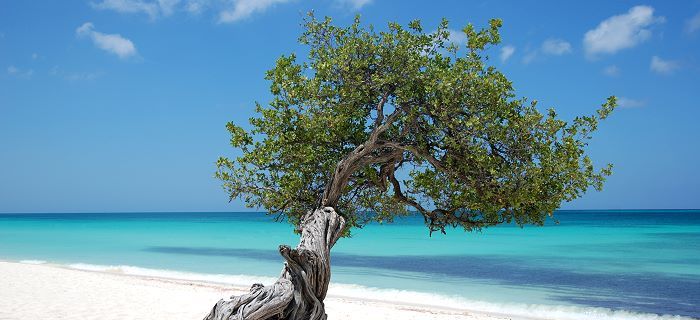

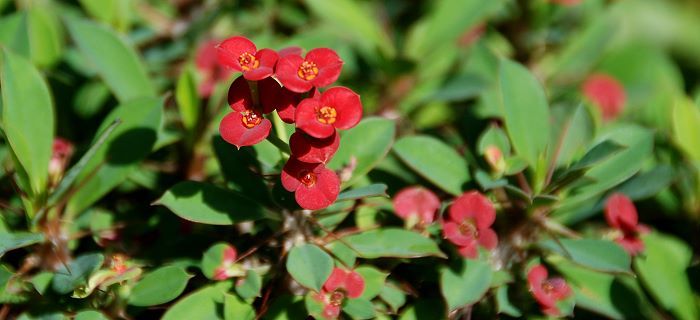
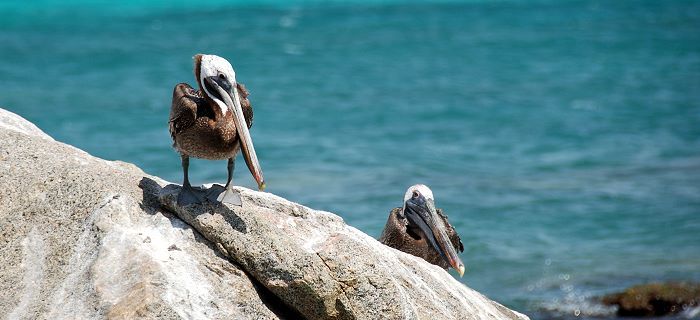
°F
-
°C
more weather...
Live Webcams
- About Aruba
- Location
- Weather Forecast & Climate
- Language
- History
- Culture
- Flora & Fauna
- Churches & Religions
- Medical Facilities
- Economy & Government
Nature Links:
Flora and Fauna
Fauna
No large land mammals roam Aruba, but you'll find a variety of small lizards and geckoes, as well as dozens of species of birds that inhabit the island full-time temporarily as they migrate between North and South America. A small swampy area just to the west of the road 1B, near the Palm Beach area, has been set aside as the Bubali Bird Sanctuary. It's visited by more than 100 species of land and sea birds, including terns, herons, trupials (they look like Baltimore orioles), and various egrets.
Offshore, note the brown pelicans that dive, straight down like a dropping stone, into the ocean to catch fish. Other seabirds include several types of gulls, cormorants, and egrets. Under the sea, life is abundant and colorftil. Fish snorkelers and divers will encounter include grouper, tang, parrotfish, angelfish, grunt, and even slithering moray eels, mantas, and lobsters.
Flora
While Aruba is not the stereotypical tropical island of lush, steamy forests and constant rains, it does host fascinating animal and plant life, some of which is found nowhere else but on the island. The Divi-Divi Tree, called Watapana in the Arawak language, is perhaps the most recognizable Aruban icon. It's an endemic bush in the ABC Islands (Aruba, Bonaire, and Curacao), and you'll see images of it on tourist T-shirts, mugs, hats, and on several place-names around the island.
The divi-divi, usually never more than a dozen or 50 feet tall, is permanently bent, at nearly a right angle, with its Medusa-like branches seemingly swept back by the wind. All divi-divi trees point to the west, in the direction of the trade winds that come from the northeast.
As you explore the island, you can't help but notice the dozens of species of cactus that have adapted well to the islands dry conditions. The towering Kadushi Cactus, tall with hundreds of needles, is used to make soup. The Yatu Cactus is also tall but has fewer needles, and is often used to make fences. The priclily Pear Cactus and many others, some as small as a golf ball, are prevalent all over the island.
The Bringa Mosa Bush has lots of needles and beautiful white flowers. The common Seida Bush has small green leaves that look like lips. Aloe Vera, another plant common to semiarid conditions, still grows in abundance on the island, but not in the quantities it did in the early part of the 20th century when it was harvested for use in medicine and cosmetics.
Along the southern coast, where resorts and hotels have made their home, you'll find imported tropical flora such as Frangipani, Poinsettia, Hibiscus, Bougainvillea, Flamboyant, Oleander, Allamanda, Manila Palm, Coconut Palm, and much more, as well as Coconut, Papaya, Mango, Lemon, Almond, and other fruit-bearing trees.
